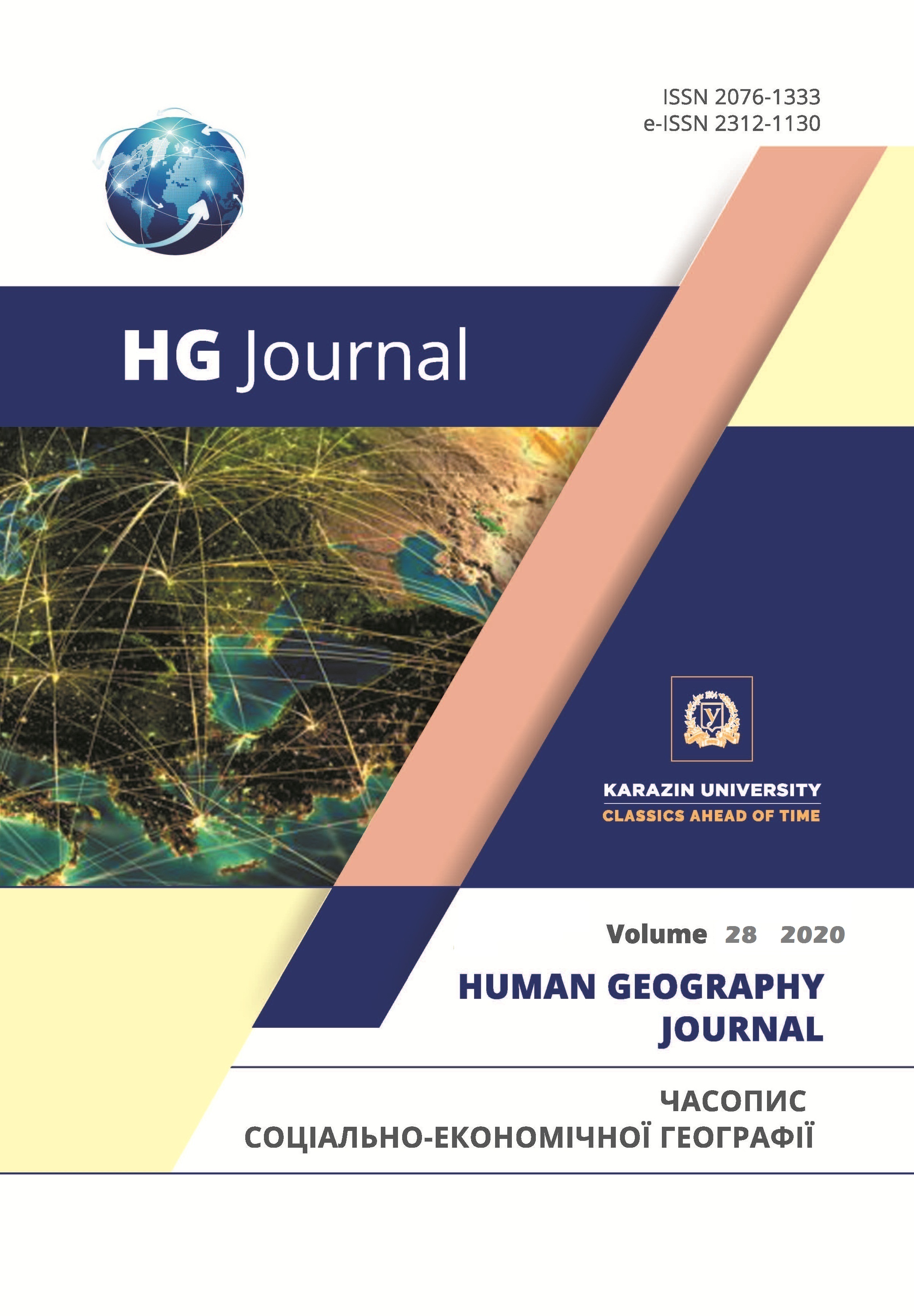Peculiarities of using geoinformation systems in training оf future geography specialists in higher education institutions
Abstract
The article analyzes the peculiarities of using geoinformation systems in the educational process in higher education institutions and substantiates the need to study them in the training of a bachelor of geography (specialty 106 Geography). The connection of geoinformation systems (GIS) with other disciplines has been established. The topics of pre-geoinformation disciplines mastering of which will help students to acquire GIS technology without hindrance are described. The market of modern GIS packages, the use of which will help future specialists in geography to acquire GIS technology is analyzed.
The classification of software products (GIS package ArcGIS, MapInfo Professional, «Panorama 1») («Map 2011»), «Digitals», GeoDraw (Geograf), AutoCad Map 3D, SAGA GIS, GRASS GIS, ILWIS, MapWindow GIS), indicating functionality and tools of GIS packages is given. The possibilities of open programs are also presented; they can be used in the educational process (PhotoFiltre (mapping), XnView (viewing), Picasa (adding geotagging with which you can specify the capture area of any photo, using Google Earth and Google maps), Quantum GIS (can be used as the main platform for teaching students how to implement GIS and how to create the highest quality maps), Google Earth network services (electronic globe), ArcGIS Online (used to manage and share maps and geographic information), Golden SoftWare (Surfer) (universal mapping software that runs on Microsoft Windows and is used to quickly and accurately erase map surfaces and convert the provided data into contour, relief or post maps, three-dimensional surfaces, 3D frames or vector graphics).
The main models of data presentation, due to which the work of GIS can be realized, are considered. The main advantages and disadvantages of using these models are indicated. The main competencies that future geographers should acquire during the study of the discipline «Geographic Information Systems and Databases» are identified, which will give foundations for the formation of a sufficient level of a competitive geography specialist.
Downloads
References
Berezhnyi, V.A., Kostrikov, S.V., & Sehida K.Yu. (2013). GIS: perspektyvy universytetskoho navchalnoho protsesu v richyshchi informatyzatsii geografichnoi osvity [GIS: prospects of the university educational process in the stream of informatization of geographical education]. Problemy suchasnoi osvity, 4, 45-54 [in Ukrainian].
Zhaldak, M.I. (2013). Problemy informatyzatsii navchalnoho protsesu v serednikh i vyshchykh navchalnykh zak-ladakh [The problems of informatization of the educational process in secondary and higher educational institutions]. Kompiuter v shkoli ta simyi, 3, 8-15 [in Ukrainian].
Klochko, O.V. (2010). Metodychna systema navchannya studentiv geoinformatsiynykh tekhnologiy [Methodical sys-tem of teaching students of geoinformation technologies]. Visnyk LNU imeni Tarasa Shevchenka, 17, 40-50 [in Ukrainian].
Kostrikov, S.V. (2013). Pro deyaki metodologichni zasady vykladennya bloku navchalnykh dystsyplin iz geoin-formatyky i GIS-tekhnologiy [On some methodological principles of teaching a block of disciplines in geoinformatics and GIS technologies]. Yu.V. Kholin, T.O. Markova (Eds.), Problemy suchasnoi osvity, 4, 71-74. Kharkiv: KhNU imeni V.N. Karazina [in Ukrainian].
Malytska, I.D. (2010). Tendentsii vprovadzhennya IKT u systemakh osvity krain Evropy [Trends in the implemen-tation of ICT in the educational systems of European countries]. Informatsiini tekhnologii i zasoby navchannya, 19. Retrieved from http://www.ime.eduua.net/em19/content/10midsec.htm [in Ukrainian].
Mateichyk, V.P., Vaihanh, H.O., & Rymaruk, K.V. (2013). Do vyboru GISs-prohram dlya vizualizatsii rivnya za-brudnennya avtomobilnykh dorih [The choice of GIS software for visualizing the pollution level of the roads]. Re-trieved from http://publications.ntu.edu.ua/visnyk/27_2013/125-130.pdf [in Ukrainian].
Osobov, I.P. (2014). Informatsiyno-komunikatsiyni tekhnologii na suchasnomu etapi organizatsii osvitnyoho protsesu [Information and communication technologies at the present stage of the organization of the educational process]. Pedagogichni nauky: teoriya, istoriya, innovatsiyni tekhnoloyii, 1(35), 114-152 [in Ukrainian].
Fedoniuk, M.A. (2012). Okremi osoblyvosti zastosuvannya informatsiynykh tekhnologiy u praktychnomu kursi dystsypliny «Ekologichne kartografuvannya» [Some peculiarities of the use of information technology in the practical course of the discipline «Environmental mapping»]. Informatsiyni tekhnologii i zasoby navchannya, 6(32). Retrieved from: http://www.journal.iitta.gov.ua [in Ukrainian].
Shyshkina, M.P. (2006). Tendentsii rozvytku ta vykorystannya informatsiynykh tekhnologiy v konteksti formu-vannya osvitnyoho seredovyshcha [Trends in the development and use of information technology in the context of the formation of the educational environment]. Informatsiyni tekhnologii i zasoby navchannya, 1. Retrieved from: http://www.nbuv.gov.ua/ejournals/ITZN/em1/emg.html [in Ukrainian].
Information and Communication Technologies in Teacher Education: a Planning Guide (2002). E. Khvilon (Eds.). Di-vision of Higher Education Unesco. UNESCO, 235 p.
Copyright (c) 2020 © Korol O., Kornus O., Kornus A.

This work is licensed under a Creative Commons Attribution 4.0 International License.




